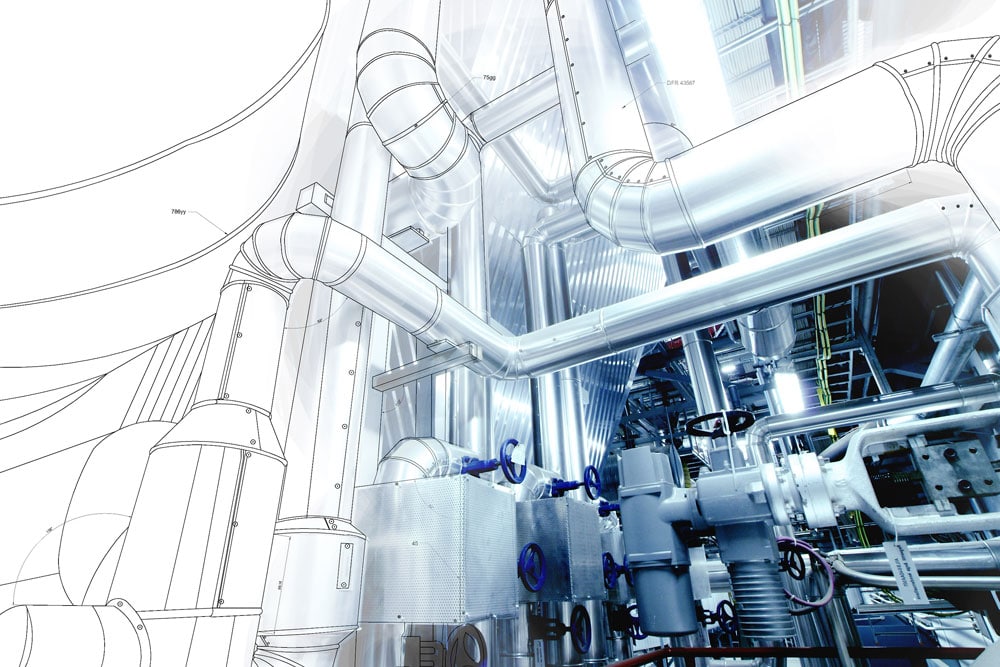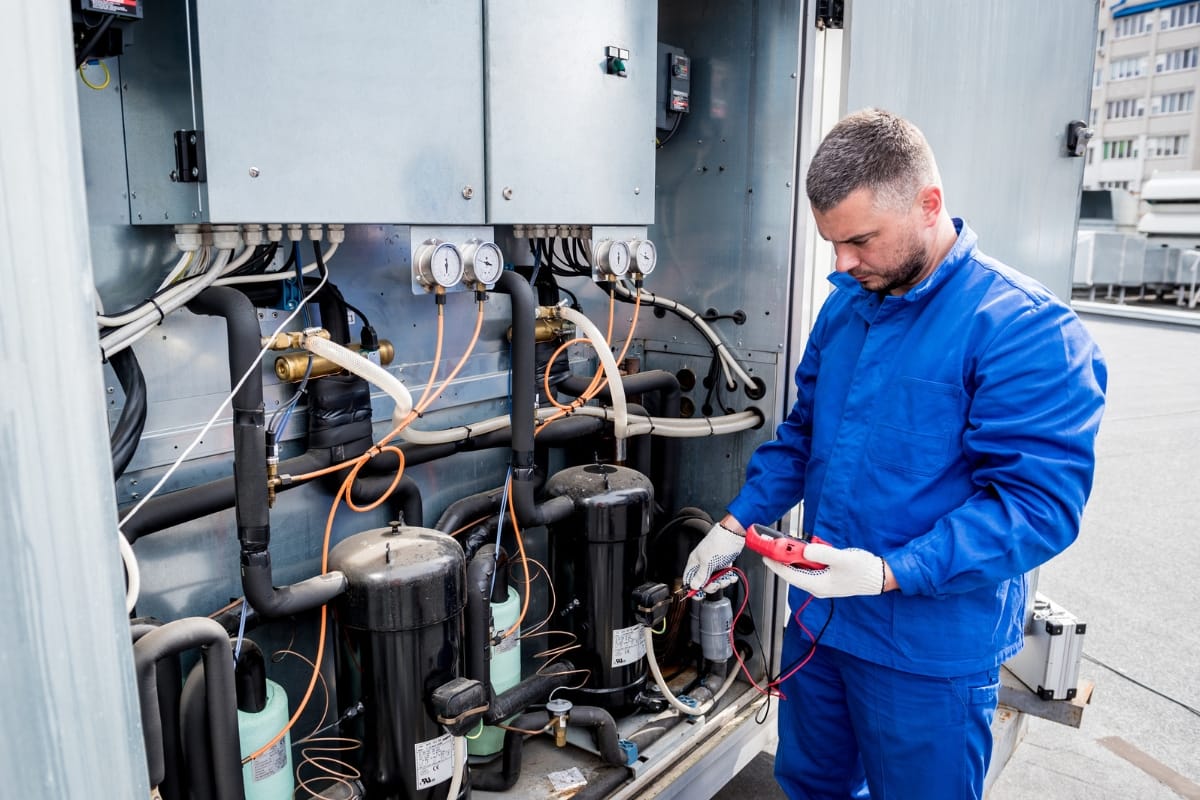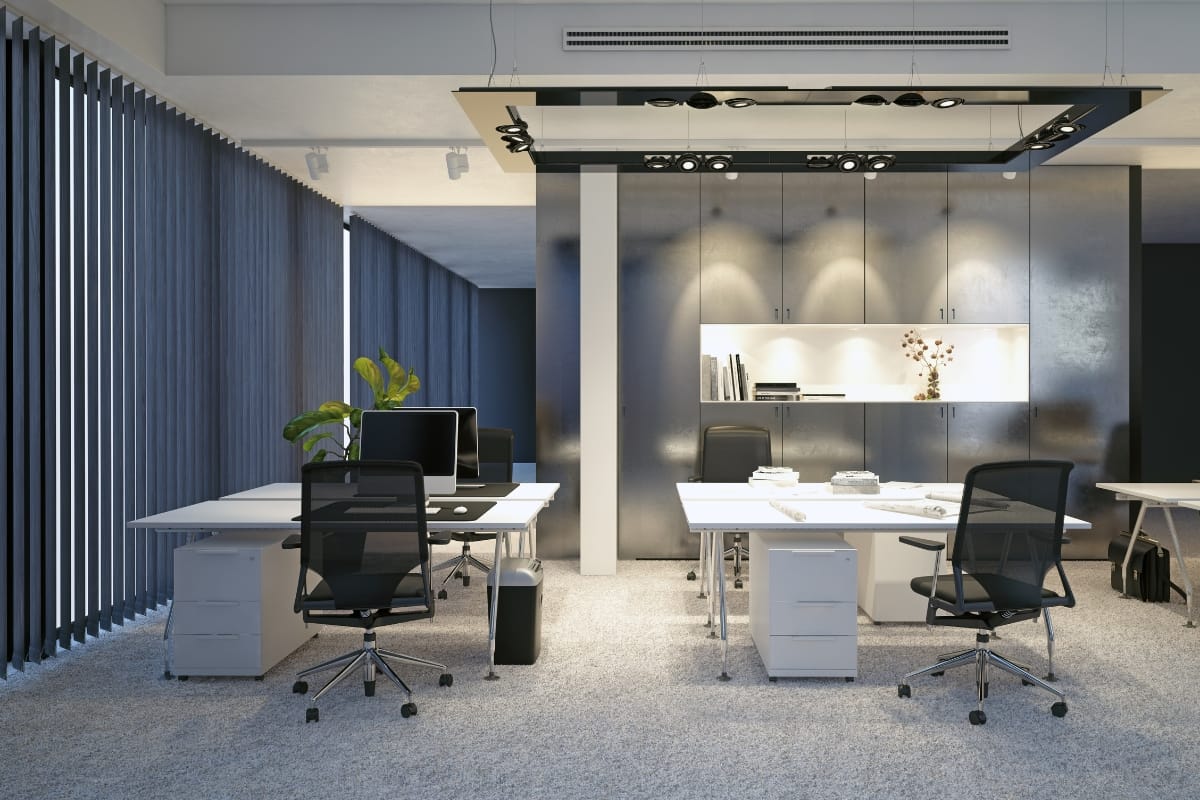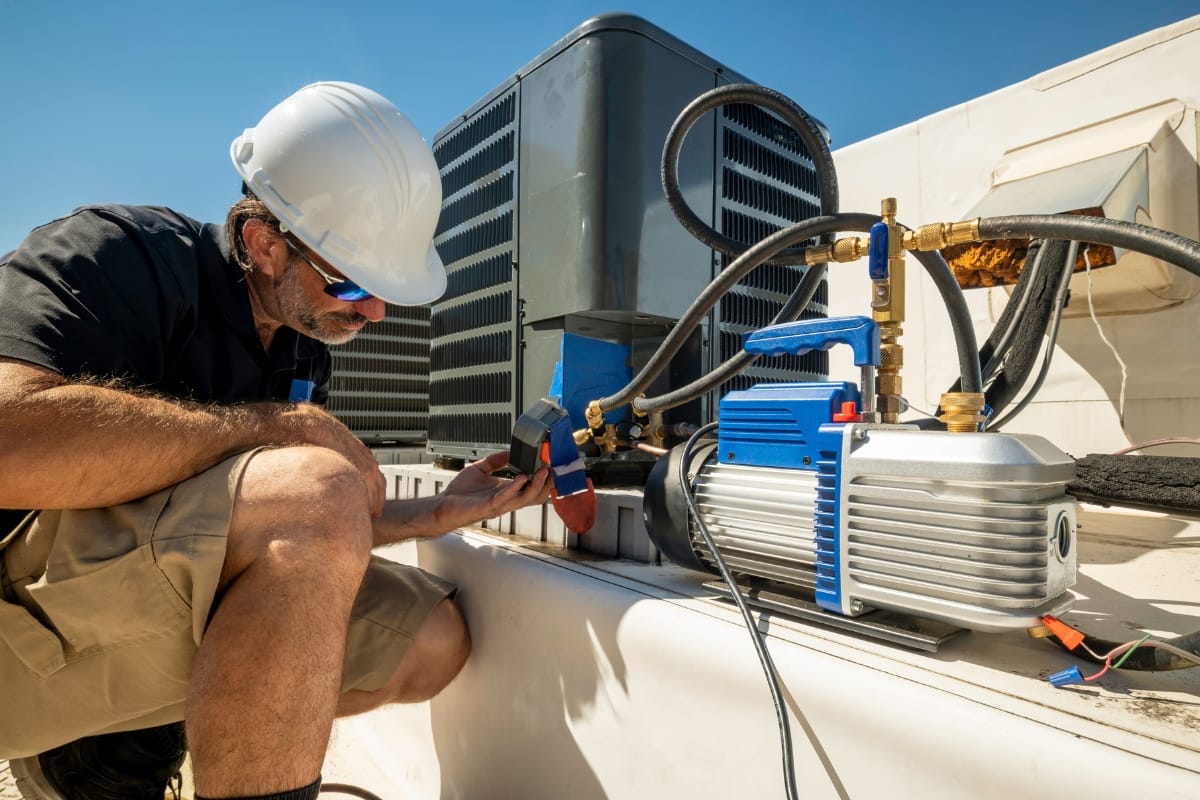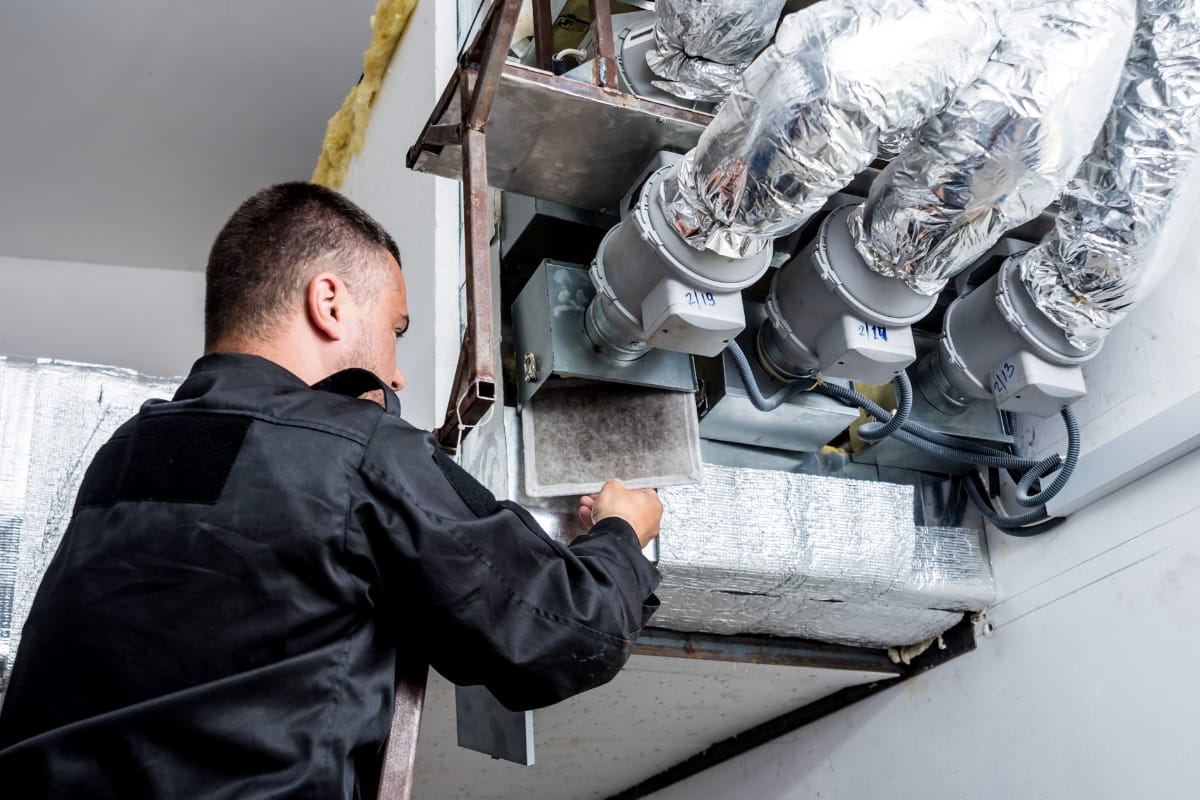Have you ever walked into a commercial building on a hot summer day and immediately felt the cool rush of air from the moment you stepped in? That refreshing blast of cool air is no accident but rather the result of a well-designed HVAC system. In today’s blog post, we will explore the fascinating world of HVAC in sustainable building design and how it plays a crucial role in ensuring energy efficiency for commercial buildings.
The term “HVAC” stands for Heating, Ventilation, and Air Conditioning, which encompasses a range of technologies and strategies aimed at providing optimal indoor comfort while minimizing energy usage. In the context of sustainable building design, a well-planned HVAC system can significantly contribute to reducing a building’s carbon footprint and overall energy consumption.
Mastering Comfort And Conservation!
Energy-Efficient HVAC Systems For Commercial Buildings

When it comes to sustainable building design, one key aspect to consider is the efficiency of the HVAC systems. These systems play a crucial role in maintaining a comfortable indoor environment while minimizing energy consumption. By opting for energy-efficient HVAC systems, commercial buildings can reduce their carbon footprint and save on operational costs.
So what makes an HVAC system energy-efficient? Here are some key features to look for:
- High Seasonal Energy Efficiency Ratio (SEER): SEER measures the cooling output of an air conditioner or heat pump in relation to the energy it consumes. Opt for systems with a high SEER rating to ensure efficient operation and lower energy usage.
- Variable Refrigerant Flow (VRF) Technology: VRF systems allow for precise control of cooling and heating in different zones of a building, reducing energy waste. By adjusting the refrigerant flow based on demand, these systems provide customized comfort while optimizing energy usage.
- Smart Thermostats and Controls: Installing programmable thermostats and advanced control systems enables efficient temperature management. These devices can be programmed to adjust settings based on occupancy, saving energy when areas are unoccupied.
- Energy Recovery Ventilation (ERV) Systems: ERV systems recover and exchange heat between the outgoing and incoming air, reducing the load on HVAC equipment. This helps maintain indoor air quality while reducing energy consumption.
- Proper System Sizing and Insulation: Ensuring that HVAC systems are correctly sized for the building’s needs and that adequate insulation is in place significantly improves energy efficiency.
By choosing commercial HVAC services that incorporate these energy-efficient HVAC systems into commercial buildings, owners and operators can create sustainable spaces that promote both environmental responsibility and cost savings. Investing in these technologies is a win-win for businesses and the planet alike.
Utilizing Renewable Energy Sources For HVAC In Sustainable Buildings
In a commercial sustainable building design, it is crucial to focus on the HVAC systems to achieve energy efficiency. HVAC plays a significant role in maintaining a comfortable and healthy indoor environment. However, traditional HVAC systems often rely on non-renewable energy sources, contributing to environmental degradation and high energy consumption.
To address this issue, sustainable buildings are increasingly incorporating renewable energy sources into their HVAC systems. By doing so, they not only reduce their carbon footprint but also benefit from long-term cost savings. Here are some renewable energy sources that can be utilized for HVAC in sustainable buildings:
- Solar Power: One of the most popular renewable energy sources for HVAC systems in sustainable buildings is solar power. Solar panels can be installed on the rooftop of the building to harness the energy from the sun. This energy can then be used to power the HVAC system, reducing the reliance on non-renewable energy sources.
- Geothermal Energy: Another renewable energy source that can be used for HVAC systems in sustainable buildings is geothermal energy. Geothermal heat pumps utilize the natural heat from the ground to provide heating and cooling for the building. This method is highly efficient and can significantly reduce the energy consumption of the HVAC system.
- Wind Power: In some regions, wind power can be harnessed to generate electricity for HVAC systems in sustainable buildings. Wind turbines can be installed near the building to capture the wind energy and convert it into electricity. This clean and renewable energy source can help in reducing the carbon footprint of the HVAC system.
- Biomass: Biomass is another renewable energy source that can be utilized for HVAC in sustainable buildings. Biomass boilers can burn organic materials such as wood pellets or agricultural waste to produce heat for the building. This method is not only environmentally friendly but also cost-effective in the long run.
- Hydroelectric Power: If the building is located near a water source such as a river or a stream, hydroelectric power can be used for HVAC systems. Water turbines can be installed to convert the energy from flowing water into electricity. This renewable energy source can provide a consistent and reliable power supply for the HVAC system.
By utilizing these renewable energy sources for HVAC systems in sustainable buildings, not only can we reduce the carbon footprint but also save on energy costs in the long run. Implementing these eco-friendly solutions can contribute to a greener and more sustainable future for our buildings and the environment.
Smart Thermostats: A Key Component Of Energy-Efficient HVAC Systems

Smart thermostats play a crucial role in creating energy-efficient HVAC systems. By optimizing temperature control and reducing energy consumption, they contribute to sustainable building design. Here are the key reasons why smart thermostats are a key component of energy-efficient HVAC systems:
- Precise Temperature Control: Smart thermostats enable precise temperature control in commercial buildings. They can be programmed to adjust the temperature based on occupancy patterns, time of day, and weather conditions. This ensures optimal comfort while minimizing energy waste.
- Remote Access and Monitoring: With smart thermostats, building managers can remotely access and monitor HVAC systems. They can adjust settings, receive real-time alerts, and analyze energy usage data. This allows for proactive maintenance, efficient troubleshooting, and energy-saving strategies.
- Energy-Saving Features: Smart thermostats offer energy-saving features like occupancy sensors, geofencing, and learning algorithms. Occupancy sensors detect whether a room is occupied and adjust the temperature accordingly, avoiding wasted energy. Geofencing adjusts the temperature based on the occupants’ proximity to the building, maximizing energy efficiency. Learning algorithms analyze usage patterns to automatically optimize temperature settings over time.
- Integration with Building Automation Systems: Smart thermostats can seamlessly integrate with building automation systems, enabling centralized control of HVAC systems alongside other building functions. This integration ensures coordinated energy management and facilitates data-driven decision-making for sustainable building design.
Smart thermostats are indispensable components of energy-efficient HVAC systems. Their precise temperature control, remote access, energy-saving features, and integration capabilities make them essential tools for sustainable building design in commercial settings.
The Impact Of Building Orientation On HVAC Efficiency
The orientation of the building plays a crucial role in determining the efficiency of the HVAC system when it comes to sustainable building design. Here are some key points to consider:
- Solar Heat Gain: The orientation of a building determines how much sunlight it receives throughout the day. By strategically placing windows and shading devices, building designers can control the amount of solar heat gain. This, in turn, can reduce the workload on the HVAC system, leading to energy savings.
- Natural Ventilation: Proper building orientation can also promote natural ventilation. By taking advantage of prevailing winds and cross-ventilation, fresh air can be circulated throughout the building. This reduces reliance on mechanical ventilation systems, resulting in energy savings and improved indoor air quality.
- Passive Heating and Cooling: Building orientation can also be optimized for passive heating and cooling. By angling the building’s facade towards the sun during winter months, it can maximize solar heat gain and reduce the need for heating. Conversely, during summer months, the building can be designed to provide shade and reduce solar heat gain, leading to lower cooling requirements.
- Energy Efficiency: By considering building orientation in the initial design stages, energy efficiency can be significantly improved. This translates to reduced energy consumption, lower utility bills, and a smaller carbon footprint.
The impact of building orientation on HVAC efficiency cannot be underestimated. By incorporating proper orientation techniques, sustainability can be enhanced, and energy efficiency can be maximized in commercial buildings.
Incorporating Natural Ventilation Strategies In Sustainable Building Design
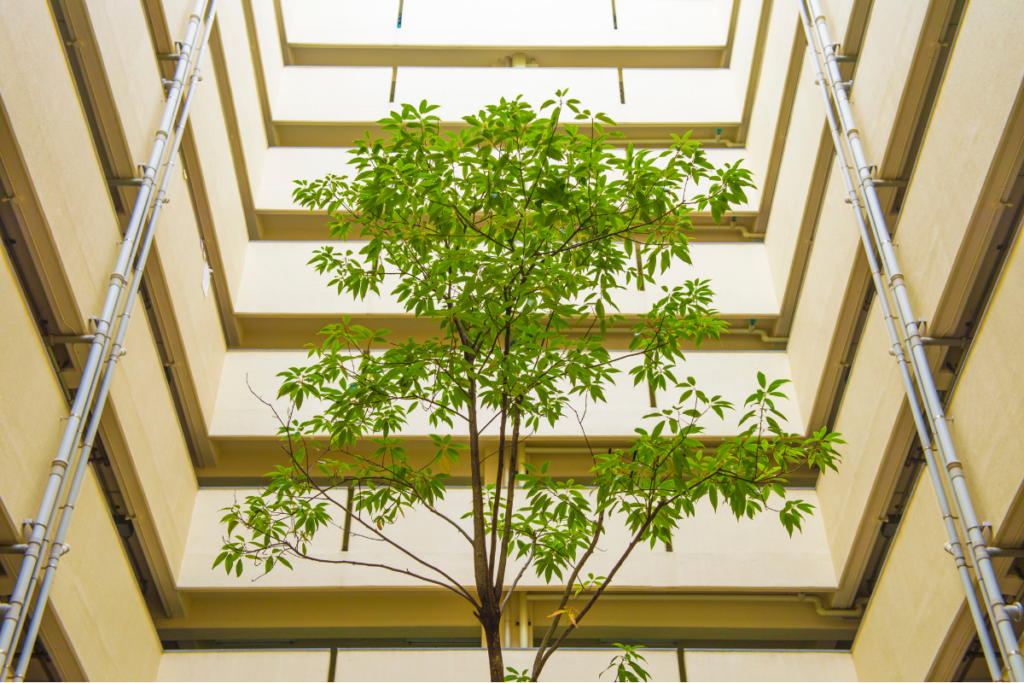
When talking about sustainable building design, incorporating natural ventilation strategies is crucial. Not only does it promote energy efficiency, but it also enhances occupant comfort as it improves indoor air quality in commercial buildings. Here are some key strategies to consider:
- Building Orientation: Properly orienting the building can maximize natural ventilation. Positioning windows and openings to capture prevailing winds allows for effective cross ventilation, reducing the need for mechanical cooling.
- Window Design: Opt for windows that can be opened and closed easily. Incorporate operable windows on multiple sides of the building to encourage airflow and provide occupants with control over their environment.
- Ventilation Stack Effect: Utilize the stack effect, a natural ventilation process that relies on temperature differences. Warm air rises and escapes through higher openings, creating a negative pressure that draws in cooler air from lower openings.
- Atriums and Courtyards: Designing buildings with atriums or courtyards can enhance natural ventilation. These open spaces act as air wells, allowing air to circulate freely and providing a pleasant environment for occupants.
- Green Roofs and Walls: Installing green roofs and walls can improve natural ventilation by reducing heat gain and absorbing pollutants. Vegetation helps cool the air and enhances air quality, creating a healthier indoor environment.
By incorporating these natural ventilation strategies into sustainable building design, HVAC systems can be optimized for efficiency in commercial buildings. Not only will this reduce energy consumption and operational costs, but it will also create healthier and more comfortable spaces for occupants.
Maintenance And Regular Inspections: Ensuring Long-Term HVAC Efficiency
To ensure long-term HVAC efficiency in sustainable building design, proper HVAC maintenance and regular inspections are crucial. Here are some key factors to consider:
- Cleaning and Air Filter Replacement: Regularly clean the HVAC system’s components and replace air filters. This helps maintain optimal airflow and prevents the accumulation of dust and debris that could hinder efficiency.
- Inspection of Ductwork: Inspect the ductwork for leaks or damage. A well-maintained duct system ensures that conditioned air reaches all areas of the building efficiently, reducing energy wastage.
- Calibration of Thermostats: Regularly calibrate and optimize thermostats to ensure accurate temperature control. This prevents the HVAC system from working harder than necessary, leading to energy savings.
- Lubrication of Moving Parts: Lubricate moving parts such as motors, fans, and belts to reduce friction and extend their lifespan. Proper lubrication minimizes energy consumption and prevents premature component failure.
- Regular System Check-ups: Schedule regular check-ups with HVAC professionals to inspect and maintain the system thoroughly. They can identify potential issues early on and suggest necessary repairs or upgrades to improve energy efficiency.
- Energy Audits: Conduct energy audits to evaluate overall HVAC performance and identify areas for improvement. These audits can help optimize system settings, identify opportunities for energy-saving upgrades, and ensure compliance with sustainability standards.
By implementing a comprehensive maintenance and inspection plan, building owners can ensure that their HVAC systems operate efficiently in the long run. This not only reduces energy consumption but also extends the lifespan of the equipment, leading to significant cost savings and a more sustainable building design.
Efficiency Meets Sustainability: Unlocking The Power Of HVAC In Sustainable Building Design

When it comes to sustainable building design, energy efficiency is at the forefront of architectural considerations. With the ever-increasing demand for environmentally friendly buildings, designers and engineers are constantly seeking innovative ways to reduce energy consumption without compromising comfort. And that’s where HVAC systems step in as unsung heroes of sustainability.
With the expertise of Galgon HVAC in creating energy-efficient and eco-friendly spaces, we are committed to revolutionizing the way HVAC systems are designed and operated in commercial buildings. Our team of experienced professionals understands the importance of balancing comfort, efficiency, and sustainability, putting them at the forefront of every project. Whether you’re looking to optimize energy usage, minimize environmental impact, or create a healthier indoor environment, our HVAC system design-build projects are the solutions you need.
Contact us for HVAC assistance or price estimate and let us help you design and build smart HVAC systems for sustainable commercial spaces.

